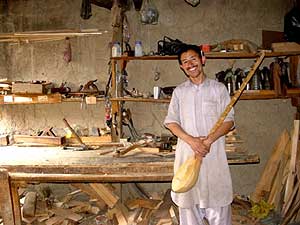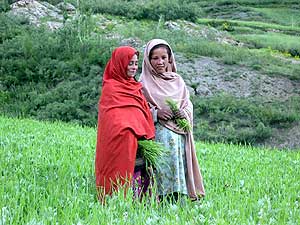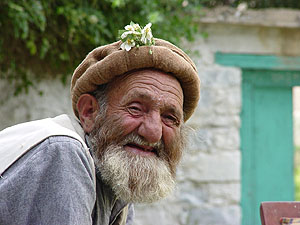Service & Area
Quick Links
Chitral Kho
 The Chitrali people, who call themselves Kho, are not Pathans. Although their language, Khoar, belongs to the Dardic group, it has strong connections with the languages of the Pamir and Wakhan regions to the north, and with Iran. It is presumed that their language Khoar, has been spoken in the area since early 5th century B.C. It is said that the Kho were aborigines of this area, from where they sprang and spread in the surrounding valleys of Kalam, Swat, and to Ghizar in Gilgit . There is a big stone in the village of Warijun Mulkho, which bears the name of “Kho Boht” or the “Stone of Kho”. According to folklore, this was the place from where “Kho” people and their language Khoar spread in and around the surrounding valleys.
The Chitrali people, who call themselves Kho, are not Pathans. Although their language, Khoar, belongs to the Dardic group, it has strong connections with the languages of the Pamir and Wakhan regions to the north, and with Iran. It is presumed that their language Khoar, has been spoken in the area since early 5th century B.C. It is said that the Kho were aborigines of this area, from where they sprang and spread in the surrounding valleys of Kalam, Swat, and to Ghizar in Gilgit . There is a big stone in the village of Warijun Mulkho, which bears the name of “Kho Boht” or the “Stone of Kho”. According to folklore, this was the place from where “Kho” people and their language Khoar spread in and around the surrounding valleys.
One of the early explores Col Durand, who saw them for the first time in 1888 wrote it was impossible not to be taken with the Chitralis, their nobles were pleasant men to meet, fond of sports, courteous and hospitable, the people were splendid mountaineers, fond of laughter and song, devoted to polo and dancing.
 The Kho are good mountaineers who seem to be impervious to cold or fatigue and after a long days climb would love to sit besides a fire and sing through out the night. They are of fine physique with a good eye and are keen hunters of small and big game
The Kho are good mountaineers who seem to be impervious to cold or fatigue and after a long days climb would love to sit besides a fire and sing through out the night. They are of fine physique with a good eye and are keen hunters of small and big game
The Kho , though his livelihood is from subsistence agriculture is rich at heart, he must have a green shady patch in which to relax in the afternoon. Hospitality is overwhelming-the generous Kho has to plant a few fruit trees to be able to offer fruit to his guests and travelers passing by. No home in Chitral is without flowers, roses are abundant and villagers will travel long distances to get new varieties of flowers. Theirs is an area that offers a festival, almost every month of the year.
Kho Folk Songs And Dances
A Chitrali is full of romance his folksongs depict love and passion where he is willing to exchange all the pleasures in this world and the heavens to win over his love. Folksingers , Sitar and reed instrument players have a special respect in the Kho society and a must in their festivities .
Shishtoowar ( Sauz )
Shishtoowar is popular folk music played with shehnai played on happy occasions, such as marriages. The tone of the songs is fast and about 20 to 25 people dance collectively in a circle. It also heralds the culmination of the traditional events.
Shabdaraz ( Dani )
Shabdaraz literally mean 'long and agonizing night.' It describes the fact that a lover keeps on thinking about his beloved, rendering him restless and sleepless. The song is sad and reflective of the extreme feelings of love likely to disappoint him. Played on a soft tone on the shehnai a dancer has to be light and agile to follow on his footwork which changes from slow to high beat with short steps to leaps.
Ghalhwar ( Combination of Dani and Sauz )
'Ghalwar' literally mean 'the tone of polo'. It is an old tune that is played early in the morning before sunrise before a polo match. At Shandur festival you wake to this lovely song at the Chitrali camps beckoning you to an early morning walk. The tone consists of four different songs, some of which are classical and some are fast. It is also played before polo teams enter the ground with their horses. It is worth noting that some horses joyfully dance with their hoofs in rhythm to the drumbeats to the thunderous clapping of the crowd.
Arab Khanu Dani
 Arab Khan was a legendary figure in Kho folklore. His famous Dani known as 'Arab Khanu Dani' is played with shehnai to be accompanied by a drummer. Only a few grasp the true song but its tone is quite famous and people like to dance whenever it is played.
Arab Khan was a legendary figure in Kho folklore. His famous Dani known as 'Arab Khanu Dani' is played with shehnai to be accompanied by a drummer. Only a few grasp the true song but its tone is quite famous and people like to dance whenever it is played.
Kho Musical Instruments
The Chitrali sitar is a popular musical instrument not only in Chitral but adopted in Ghizar, Gilgit Hunza region and by the Pathans of the Frontier and Afghanistan. It is made out of mulberry wood with five steel strings arranged in three courses, the outer ones have double strings, tuned in unison, while the inner course is single. The performer plays the strings with the index finger of the right hand, generally using upward plucking strokes.
There are numerous songs and tunes about legendary figures from history which are played on reed instruments . These songs have different names, some feature the name of the composer other to people who danced and adopted the tune.
